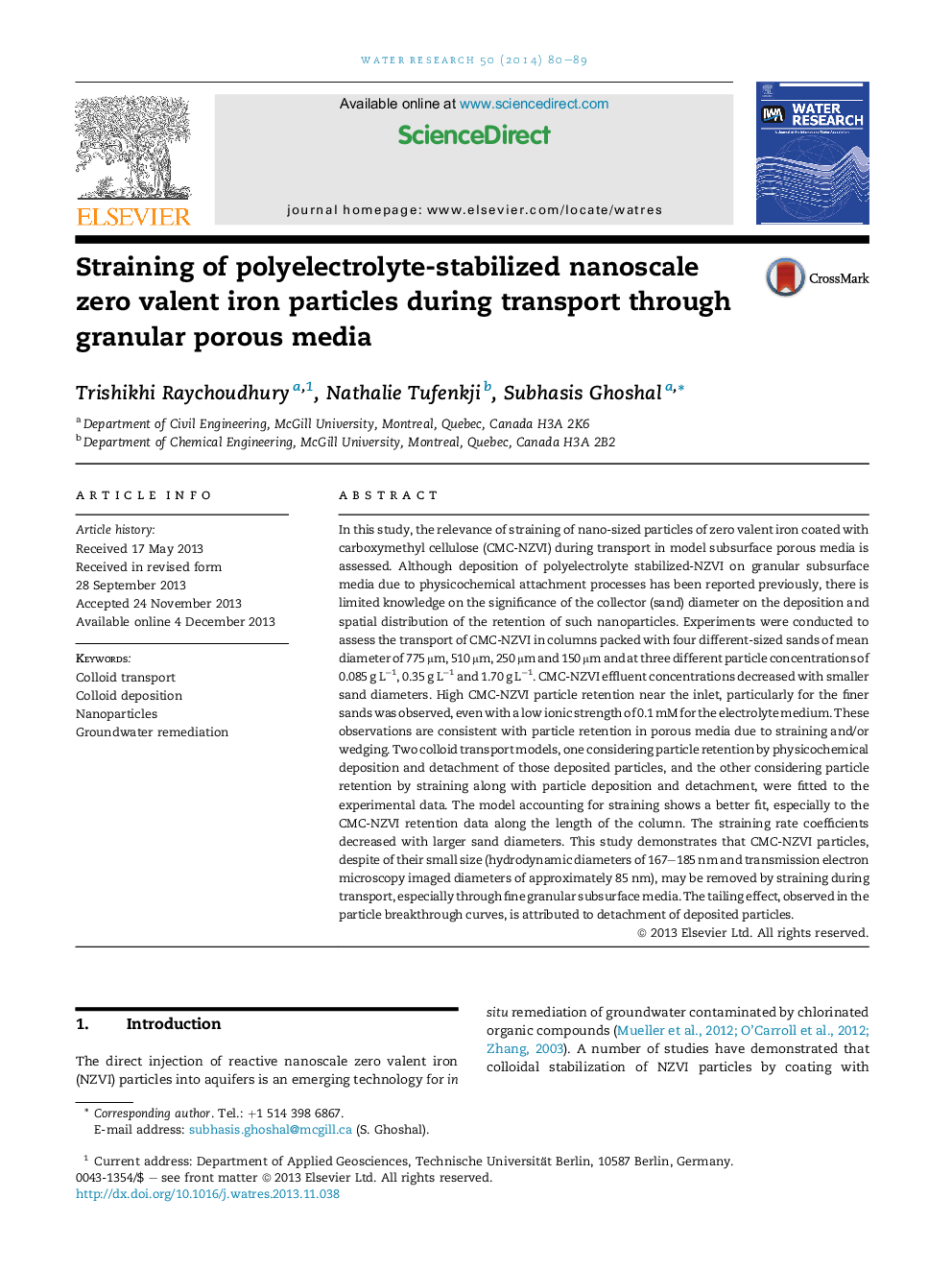| Article ID | Journal | Published Year | Pages | File Type |
|---|---|---|---|---|
| 6366941 | Water Research | 2014 | 10 Pages |
â¢Elution of polymer-coated Fe0 nanoparticles through sand decreased with sand size.â¢Nanoparticle concentrations did not influence relative elution concentrations.â¢Unusually high nanoparticle retention near column inlet occurred with finer sands.â¢Elution and retention data fit models only if nanoparticle straining was included.
In this study, the relevance of straining of nano-sized particles of zero valent iron coated with carboxymethyl cellulose (CMC-NZVI) during transport in model subsurface porous media is assessed. Although deposition of polyelectrolyte stabilized-NZVI on granular subsurface media due to physicochemical attachment processes has been reported previously, there is limited knowledge on the significance of the collector (sand) diameter on the deposition and spatial distribution of the retention of such nanoparticles. Experiments were conducted to assess the transport of CMC-NZVI in columns packed with four different-sized sands of mean diameter of 775 μm, 510 μm, 250 μm and 150 μm and at three different particle concentrations of 0.085 g Lâ1, 0.35 g Lâ1 and 1.70 g Lâ1. CMC-NZVI effluent concentrations decreased with smaller sand diameters. High CMC-NZVI particle retention near the inlet, particularly for the finer sands was observed, even with a low ionic strength of 0.1 mM for the electrolyte medium. These observations are consistent with particle retention in porous media due to straining and/or wedging. Two colloid transport models, one considering particle retention by physicochemical deposition and detachment of those deposited particles, and the other considering particle retention by straining along with particle deposition and detachment, were fitted to the experimental data. The model accounting for straining shows a better fit, especially to the CMC-NZVI retention data along the length of the column. The straining rate coefficients decreased with larger sand diameters. This study demonstrates that CMC-NZVI particles, despite of their small size (hydrodynamic diameters of 167-185 nm and transmission electron microscopy imaged diameters of approximately 85 nm), may be removed by straining during transport, especially through fine granular subsurface media. The tailing effect, observed in the particle breakthrough curves, is attributed to detachment of deposited particles.
Graphical abstractDownload high-res image (241KB)Download full-size image
